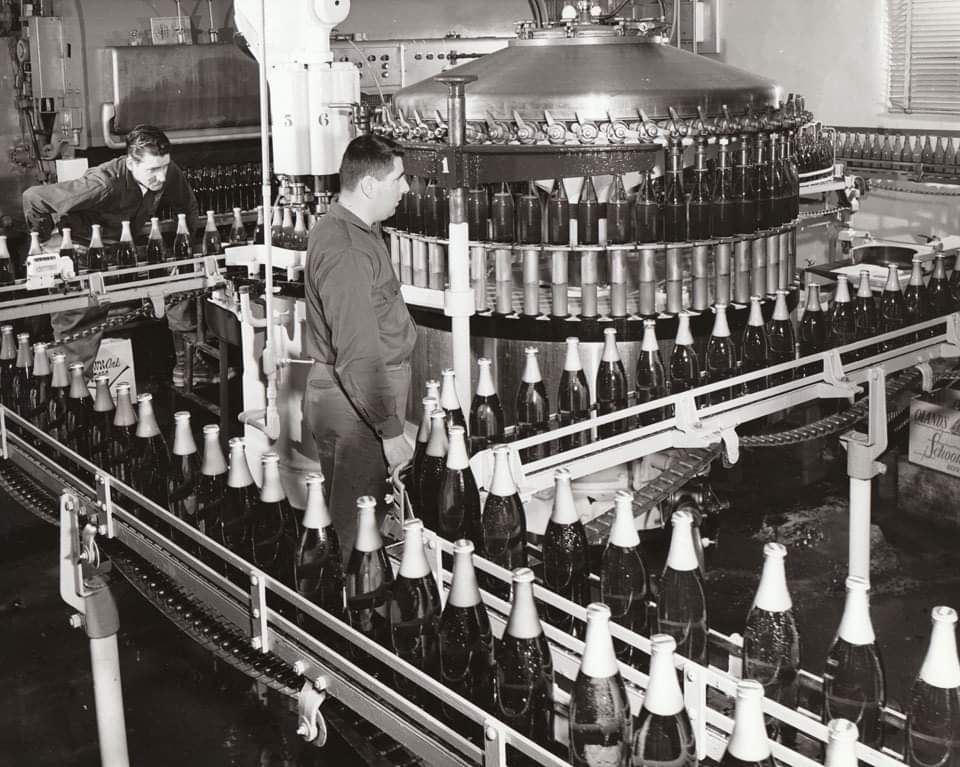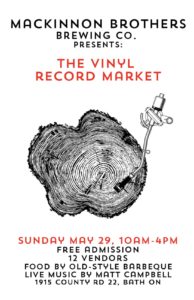 I have a new hobby. Doin’ nuttin’. After last week’s chores, we took off and wandered a bit around Montreal on the weekend and said hello to Leonard. Crescent‘s bars were bustling last Saturday evening. And we hopped over to Syracuse NY last Wednesday for an afternoon AAA baseball game, a driveby glance into the Loop Grill and some serious American snacks shopping to bring back to Canada but otherwise this summer vacation has been mainly about nuttin’. There should be ads on the TV about staying home and doing nuttin’ like one of those for visiting the Gulf States or Arizona. Except it’s about the backyard. I could monetize that. Become a backyard doin’ nuttin’ influencer. Post TikToks about it. Have a Patreon site about it behind a subscribers only wall. Except that would be doing stuff. And not nuttin’. I am too into nuttin’ to be doin’ something about nuttin’.
I have a new hobby. Doin’ nuttin’. After last week’s chores, we took off and wandered a bit around Montreal on the weekend and said hello to Leonard. Crescent‘s bars were bustling last Saturday evening. And we hopped over to Syracuse NY last Wednesday for an afternoon AAA baseball game, a driveby glance into the Loop Grill and some serious American snacks shopping to bring back to Canada but otherwise this summer vacation has been mainly about nuttin’. There should be ads on the TV about staying home and doing nuttin’ like one of those for visiting the Gulf States or Arizona. Except it’s about the backyard. I could monetize that. Become a backyard doin’ nuttin’ influencer. Post TikToks about it. Have a Patreon site about it behind a subscribers only wall. Except that would be doing stuff. And not nuttin’. I am too into nuttin’ to be doin’ something about nuttin’.
What has been going on? First, Pellicle‘s Wednesday piece is about a fairly large diversified English farm operation that includes barley and brewing in its mix of production. It’s a farm with a focus on something more essential – thoughtful care of the soil:
There’s one question which is unanswered: what does this do to the flavour of the beer? Duncan takes a moment to answer, frowning as he thinks of the right word. “Nothing,” he says. He thinks some more, then shakes his head as if confirming the answer to himself. “Nothing. It’s not necessarily about that,” he says. “It’s the ethos that’s gone into building it so you can talk about having environmental benefit and food in the same sentence. That’s the point of it.”
Somewhat similarly in the sense of place, Jeff has written about a relatively secluded micro in eastern Oregon and draws a useful conclusion:
This is perhaps the greatest advantage of remote brewing. In cities, brewers are aware of what people are doing around them. It’s almost impossible not to be influenced, to borrow techniques or discover new ingredients. In Baker City, Tyler and his current head brewer Eli Dickenson can easily drop into their own groove. Their customers know what they do and expect them to do it—and they don’t spend a lot of time at other breweries getting distracted by the trend du jour.
On the opposite end of the reality v. non-reality scale, it was brought to my attention by @DrankyDranks that a fraud is about to be perpetrated on the drinks buying public:
Couple of new non-alc brands on the horizon. White Claw 0% “non-alcoholic premium seltzer,” comin’ in 4 “full-flavor” variants at 15 calories per can with “hydrating electrolytes”: black cherry cranberry, mango passion fruit, peach orange blossom and lime yuzu. Expected in Jan.
The double negative has been achieved! Speaking of the potentially unecessary, care of Beer Today we may have also reached peak data point – an observation I make given the uncertainty I have as to the necessity of this level of detail:
…trading improved in line with the temperatures last week. There was a particular surge in sales in midweek, with Tuesday (up 10%), Wednesday, which was boosted by England’s semi-final victory over Australia (up 17%), and Thursday (up 15%) all in double-digit growth. But trading was more modest on Friday (down 3%) and Saturday (up 4%) as rain moved back in. Warmer weather lifted the beer category, where sales rose 10% year on year. Wine (up 9%) and cider (up 1%) were also positive, but soft drinks (down 2%) and spirits (down 4%) were both negative.
Does the well informed publican check the weather forecast before placing orders for cask deliveries or setting prices? “Hmmm… rain’s coming Friday, need me a happy hours special…” Maybe. Having once created a 15,000 cell Excel table to track (among many things) hot dog sales and visiting team placement in the league’s standings over six or eight years I am sensitive to the possibilities of such things.
Speaking of stats, France is paying winemaker to destroy some of their stock to cope with this drop in some markets – blamed by the BBC on an increase in craft beer sales:
European Commission data for the year to June shows that wine consumption has fallen 7% in Italy, 10% in Spain, 15% in France, 22% in Germany and 34% in Portugal, while wine production across the bloc – the world’s biggest wine-making area – rose 4%.
Lisa Grimm is posting at Weird Beer Girl HQ and this week comes to the defence of what she calls a trad bar in Dublin, Piper’s Corner:
I’m aware I’m on slightly dangerous ground here, as there’s absolutely a place for the shows aimed at tourists (if they are willing to pay for a specific kind of experience that’s keeping musicians working, why not?), and also because folk music is never static – it’s always evolving, so there’s no one ‘right’ way to play or enjoy trad tunes. Now, this doesn’t mean visitors are not welcome – not at all – just that it seems to be a more organic experience (for lack of a better word – and this is largely based on word of mouth, since you know I’m asleep by then most of the time).
Last Friday, Boak and Bailey posted a review of the new book Cask – the real story of Britains unique beer Culture by Des de Moor which by all accounts is a very good and comprehensive read – if for no other reason (though there seem to be many) than Moore’s willingness to share various points of view:
Though clearly a passionate fan of cask ale, he isn’t an unquestioning cheerleader and points out that it doesn’t work well for every style. American-style IPAs and sour beers, he argues, rarely benefit from cask dispense. He comes right off the fence when it comes to the price of cask ale: “[If] cask beer is to have a sustainably healthy future, its average price will have to rise in comparison to the pub prices of other drinks… One argument for cheap cask is that it helps drive sufficient turnover to keep the product fresh, but that effect has surely reached its limits when price becomes a barrier to maintaining quality.” For balance, he quotes others who disagree, and who worry about cask ale becoming an expensive, niche product, rather than an everyday pleasure.
And Martyn has embarked on a journey about journeying, writing a series of pieces on the value of giving oneself over to the pre-planned pre-paid beer bus tour, all under the umbrella heading “If it’s Tuesday, this must be Kölsch!” So far we have parts one, two and three with more promised. It’s a bit mind melting in the pace, one which may tax even Ron, but he shares a number of observations like this on why one might want to subject oneself to this sort of exercise:
…one big advantage of joining a largeish group of people on a European beer trip is that when you get to, say, a place like Cantillon in Brussels, where the brewery tasting room/bar has a large range of aged 75cl bottled beers costing up to 70 euros a (literal) pop, sharing those rare beers you may never get the chance to drink again among half a dozen or more drinkers cuts the cost per head dramatically.
Good point. And another sort of good reminder this week from The Beer Nut: “Slagging off hazy IPA is easy (and fun!) but well-made beers like this do make it a little bit harder to do.”
Heavens, they do things on a certain scale in Kenya when it comes to allegedly skirting the licencing laws:
A Chuka court in Tharaka Nithi County has issued a warrant for the arrest of Simon Gitari for failure to honour court summons over the alleged operation of an unlicensed brewing industry. The millionaire brewer, popularly known as ‘Gitari Boss’, is the director of Hakim Commercial Agencies which owns the factory located in Ndiruni village in Chuka Sub-County. On Monday, a multi-agency team led by Tharaka Nithi County Police Commander Zacchaeus Ngeno raided the distillery and seized 250,000 litres of illegal liquor.
Also somewhat irregular in expectations, Gary wrote an interesting piece on the intersection between pubs and the pulpit in mid-1900s England this week including this example:
The padre Basil Jellicoe (1899-1935) descended from Anglo-Catholic churchment and naval figures, and was Oxford-educated. He had no apparent exposure to pubs as a youth, in fact was a teetotaller. His pub interest was of the old-school missionary-type, inspired by doctrine and the Bible. If church adherents were to be found he wanted to cultivate the ground, and would not let prevailing notions of propriety get in the way. He also wanted to improve social conditions in and related to the pub. He started to operate pubs so he could have full control to promote this goal – the Church was henceforth in the pub business.
Katie wrote about one way of responding to loss through ritual in her most recent edition of The Gulp, one of the few drinks “newsletters” still holding its own:
Despite the tragedies of the past months, spending time with friends is always a celebration, and I intend to treat it as such. My main contribution to the evening’s events will be the wine we drink during feasting and the extremely technical/spiritual practice of “burning shit”. I need to choose carefully. It should be wine that’s good enough to change our fortunes and lift us up. Wine good enough to offer to Hecate, wine good enough to stir our souls and clear our minds. It also needs to pair well with a vegan barbecue.
One of my favourite stunned concepts amongst right-wing US fear mongering is the use of “Canada-style” when used as the ultra “woke” by the “freedom” folk… as in this story’s headline:
President Joe Biden’s chief adviser on alcohol policy said his agency may issue new guidelines that limit Americans to just two drinks per week. Dr. George Koob, the director of the National Institute on Alcohol Abuse and Alcoholism (NIAAA), told the Daily Mail that he’s interested in tightening U.S. guidelines to match Canada’s alcohol recommendations, which say that both men and women should consider having only two drinks every week. Canada’s health department issued the recommendations this year under left-wing Prime Minister Justin Trudeau.
Note: while publicly funded, the Canadian two-drinks standard is a recommendation of a private entity which is one part of a bigger and heavily leaning academic discourse amongst many of a variety of points of view, much also fueled in whole or part directly and indirectly by public funds. We also do not follow the Canada Food Guide all that closely if grocery store shelves are anything to go by. Note also: we live much longer.
Vinepair published an almost self-defeating piece on the role of celebrity and beer replete with branding consulting jargon which then veers off into a reality-based (perhaps even inadvertenly honest) view near the end:
Celebrity involvement will entice journalists to write about a brand once. But star wattage eventually dims as a selling point. “Someday we will not be new news anymore,” says Eight’s Campbell. Any fermented liquid must stand on its own merits, hitting that sweet spot of price point and pleasure. Convincing customers that they should shoehorn another beer into their crowded drinking calendar takes effort, a long play in a world that celebrates the fast windfall. “Even though you have somebody with a big mouthpiece, you still have to build a brand,” Campbell says. “There’s got to be a meaningful connection.”
And finally for Stan (and apparently on brand pachyderm-wise) we have the story of an elephant which did not get into the beer but still sussed out something else:
Placidly and professionally, the mammal sweeps the ground with its trunk several times before tossing up a nondescript black rucksack, trumpeting as it announces its discovery. Border police were already on the scene. The officers had arrived to escort the elephants out of a nearby village, reported China National Radio (CNR). Mindful of their primary duty, police waited till the elephants had made their safe exit before inspecting the elephant’s “gift”, reported CNR. The elephant did not disappoint.
There. A shorter post perhaps but my world is whole even if the news is a bit quieter this week. And as per ever and always, you can check out the many ways to find good reading about beer and similar stuff via social media and other forms of comms to connect – even including at my somewhat quieter than expected Threads presence @agoodbeerblog. Got on BlueSky this week and added it to my IG, FB, X, Mastodon, Threads, Substack Notes and a deservedly dormant Patreaon presence. I am multi! I am legion!! Yet totally sub. All in all, I still am preferring the voices on Mastodon, like these ones discussing beer:
Alan McLeod | A Good Beer Blog (… me…)
Stan Hieronymus | The Man!
Boak & Bailey | The B² experience
Curmudgeon Ale Works | Jonathon is Brewing
Katie Mather | Shiny Biscuit and Corto
David Jesudason | “Desi Pubs” (2023) author
BeoirFest | They say “Let’s Talk Beer”
Ron Pattinson | The RonAlongAThon Himself
Al Reece AKA Velky Al | Fuggled
Jennifer Jordan | US hops historian
Andreas Krennmair | Vienna beer and lager historian
Beer Ladies Podcast | Lisa Grimm and colleagues
The Bar Towel | Toronto’s chat zone for beer lovers
Chicago Beer Society | Folk in Chicago getting social over beer
Jay Brooks | Brookston Beer Bulletin
Joe Stange | Belgian beer expert, beer magazine editor
Cider Bar | Barry makes Kertelreiter cider
Laura Hadland | CAMRA historian and beer writer
Brian Alberts | US beer historian
Jon Abernathy | The Beer Site
Maureen Ogle | US Beer Historian
Lars Garshol | Norwegian Beer Historian and Kveik Hunter
James Beeson | Beeson on Beer
Carla Jean | MAINER!!!
Thandi Guilherme | Beer Ladies Podcast Co-host
Lisa Grimm | Beer Ladies Podcast Co-host
Roy of Quare Swally | Beery ramblings from Northern Ireland
Rob Talksbeer | Podcaster and Youtuber
Anthony Gladman | UK Drinks Writer
Jeff Alworth | Manna Of Beervana
Northwest Beer Guide | Fairly self explanatory… but not NW Latvia…
Evan Rail | Prague based GBH editor, freelance writer, NYT etc.
Todd Alström | 50% of the Alströms
Jacob Berg | Beer talking librarian
Anyone else? And, yes, we also check the blogs, podcasts and newsletters to stay on top of things (though those things called “newsletters” where 1995 email lists meet the blogs of 2005 may be coming to an end of value if the trend with so many towards the dull dull dull means anything) including more weekly recommendations from Boak and Bailey every Saturday and Stan at his spot on those Mondays! Get your emailed issue of Episodes of my Pub Life by David Jesudason on many Fridays. And Phil Mellows is at the BritishBeerBreaks. Once a month, Will Hawkes issues his London Beer City newsletter and do sign up for Katie’s now much more occassional but always wonderful newsletter, The Gulp, too. Ben’s Beer and Badword is back! And check out the Atlantic Canada Beer Blog‘s weekly roundup. There is new reading at The Glass. Any more? Yes! Check to see the highly recommended Beer Ladies Podcast. And the long standing Beervana podcast . There is the Boys Are From Märzen podcast too and check out the travel vids at Ontario’s own A Quick Beer. There is more from DaftAboutCraft‘s podcast, too. All About Beer has introduced a podcast. There’s also The Perfect Pour. Plus follow the venerable Full Pint podcast. And the Craft Beer Channel on Youtube soon celebrating a decade of vids. And remember BeerEdge, too, and The Moon Under Water… if you have $10 a month for this sort of thing… I don’t. Pete Brown’s costs a fifth of that. There was also the Beer O’clock Show but that was gone after a ten year run but returned renewed and here is the link!

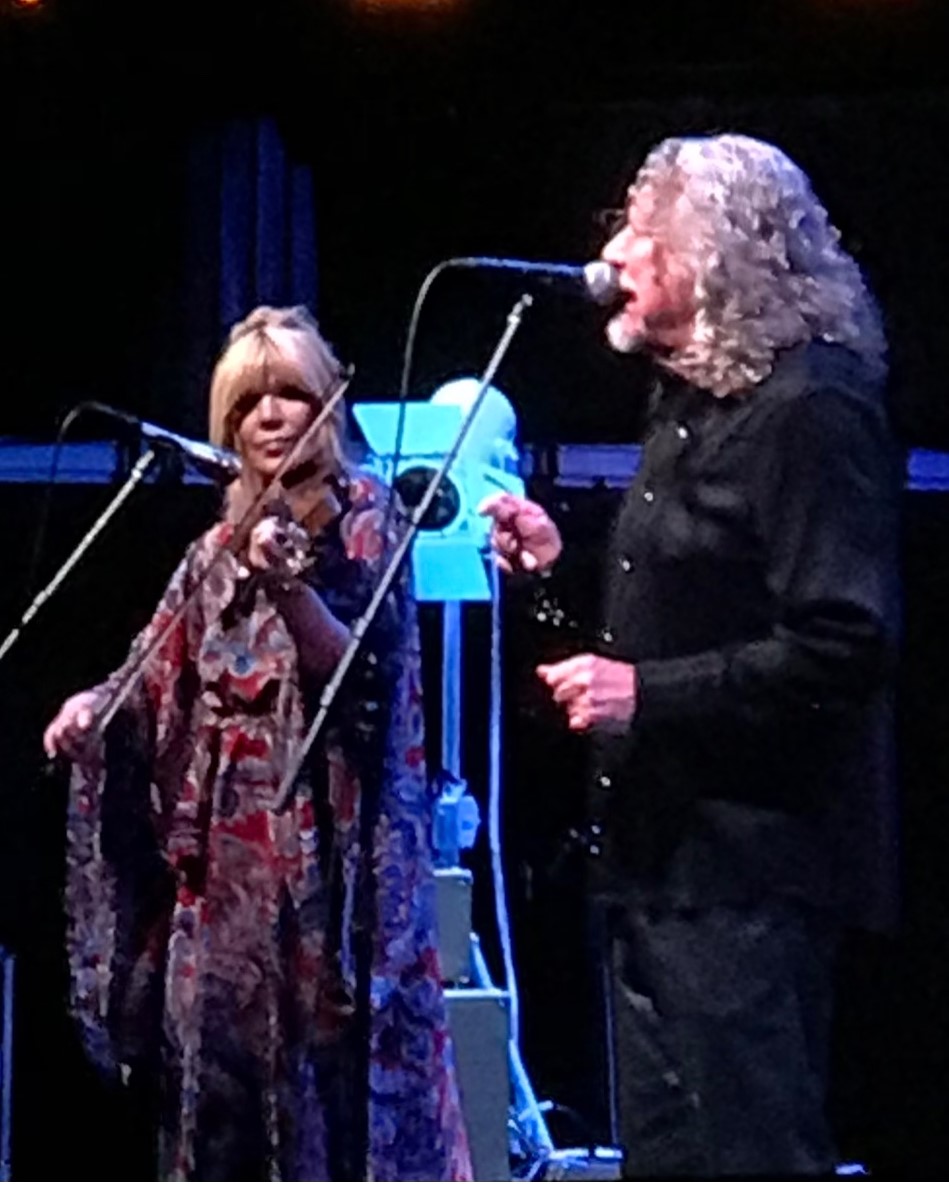
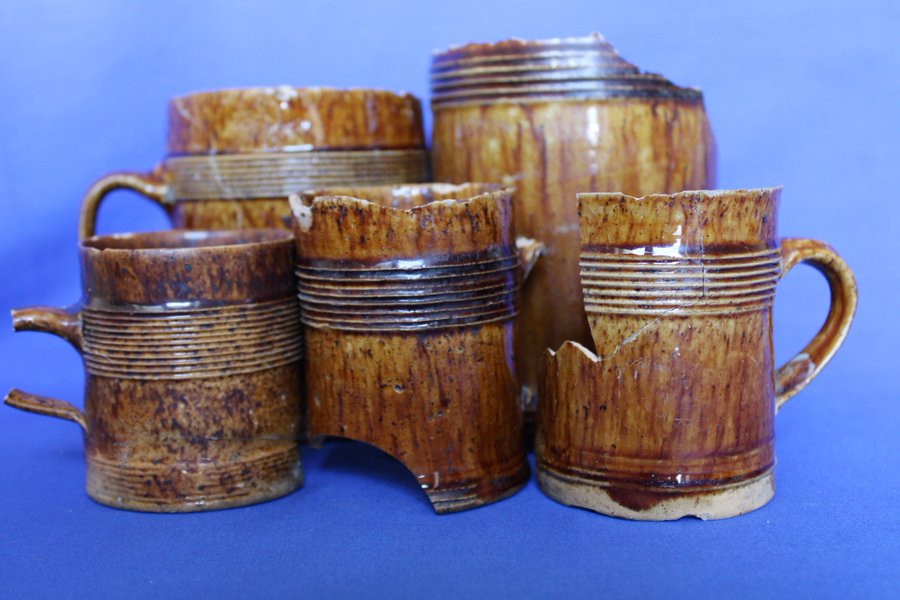


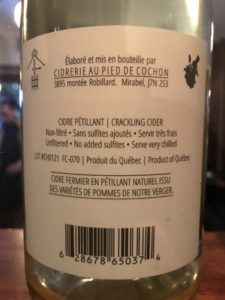




 Beer snake! Never seen one from that point of view before. Thanks to beer and baseball specialist
Beer snake! Never seen one from that point of view before. Thanks to beer and baseball specialist  : not Pete’s best photo… that is Pete, right? And grey? Really. Talk about yer dreich! No… not Pete… no, the logo’s background!!****
: not Pete’s best photo… that is Pete, right? And grey? Really. Talk about yer dreich! No… not Pete… no, the logo’s background!!**** I was thinking of what to post as an image this week, given this time of mourning for HM**** QEII. And here it is – the declaration of the passing and proclamation of the new sovereignty… in
I was thinking of what to post as an image this week, given this time of mourning for HM**** QEII. And here it is – the declaration of the passing and proclamation of the new sovereignty… in  Moving away from that news and a little bit, what has gone on out there this week? Well,
Moving away from that news and a little bit, what has gone on out there this week? Well, 